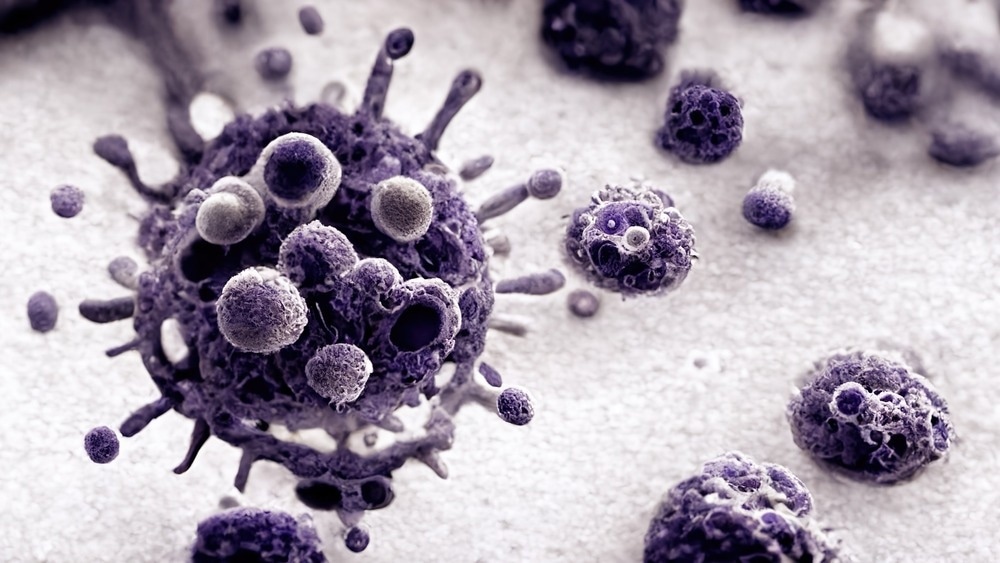The coronavirus disease 2019 (COVID-19) pandemic caused great havoc worldwide, directly through its impact on human health and because of the non-pharmaceutical measures implemented to mitigate its spread. After one year of lockdowns, social distancing, mask-wearing, and closures of businesses and educational institutions, multiple variants of the causative severe acute respiratory syndrome coronavirus 2 (SARS-CoV-2) continued to emerge in quick succession in different parts of the world.
A new Cell Host & Microbe study discusses how immune escape mutations allow a recent SARS-CoV-2 variant to evade neutralizing antibodies and cause breakthrough infections among immune populations.

Study: Evasion of Neutralizing Antibody Responses by the SARS-CoV-2 BA.2.75 Variant. Image Credit: Sternfahrer / Shutterstock.com
Introduction
Among the various SARS-CoV-2 variants detected, the most notable were often immune escape variants capable of causing reinfection and breakthrough infections following natural infection and vaccination, respectively. Other variants capable of faster and wider transmission or more virulent disease have been referred to as SARS-CoV-2 variants of concern (VOCs).
The SARS-CoV-2 Omicron variant is the most recent VOC to be detected. Several Omicron subvariants are currently in circulation, accounting for the multiple Omicron waves recorded since its initial emergence. These include the initial BA.1 followed by BA.2, the latter associated with specific biological advantages.
BA.2 has evolved into several subvariants, including the formerly dominant BA 2.12.1 and BA 2.75, which have since been replaced by BA.4 and BA.5. Both BA.4 and BA.5 have the same spike protein and L452R mutation that is associated with a high degree of neutralizing antibody resistance.
BA 2.75 is now spreading in Southeast Asia; however, it has also been identified in other countries worldwide. This subvariant comprises nine spike mutations, several of which reside in the receptor binding domain (RBD), which may drive its immune escape characteristics.
The current study aimed to examine this aspect of BA.2.75 using neutralizing antibodies (nAbs) in serum from healthcare workers (HCWs) vaccinated with messenger ribonucleic acid (mRNA) vaccines, either primary or booster doses, as well as patients hospitalized during the Omicron surge.
Study finding
BA.2.75 appears to have increased neutralization resistance compared to BA.2 when tested against both types of immune sera. Both Omicron subtypes were strongly resistant to nAbs compared to the ancestral D614G strain. Only a few HCW samples had 50% neutralization titers (NT50) over the limit of quantification after two doses of an mRNA vaccine.
Conversely, one booster dose appeared to restore neutralizing capacity against Omicron, irrespective of the subvariants. However, the neutralizing response was five-fold weaker against BA.2.75 compared to D614G and four-fold weaker against BA.2 and BA.2.12.1. Despite this, BA.2.75 was neutralized more potently than BA.4 or BA.5, which showed 10-fold escape as compared to D614G.
Following moderate to severe Omicron infection, the nAb response was lower than that following three vaccine doses, including an mRNA booster. In these samples, BA.2 and BA.2.75 had similar resistance to nAbs; neutralization was much less against BA.4/5.
Two or three vaccine doses increased nAb titers against BA.2.75 two- and five-fold less than D614G, respectively. In unvaccinated patients, both showed comparable neutralization, as did BA.2.
The researchers identified the G446S and N460K mutations, as well as the reversion mutation R493Q, as responsible for enhanced nAb escape with BA.2.75 compared to BA.2. R493Q restores the neutralizing epitopes, at least in part, to the BA.2.75 compared to their loss in BA.2.
Omicron shows reduced fusogenicity, an increased fusion between the virus and cell membranes to accomplish viral entry into the host target cell. While this is true of all Omicron subtypes, BA.2.75 is more fusogenic than BA.2, producing two-fold larger syncytia than BA.2.
Using mutational analysis, the researchers found that this is related to the N460K mutation. Moreover, this mutation likely increases spike processing, resulting in a 40% and 70% increase in the proportion of S1 and S2 spike subunits, respectively, compared to the spike protein.
Structural modeling showed the potential modes by which these key mutations affected the structure and interactions of the spike ectodomain or the RBD in the BA.2.75-receptor complex as compared to the BA.1/BA.2 spike-receptor complexes.
Conclusions
The study findings indicate that BA.2.75 might have compensatory mutations to evade neutralizing antibodies while enhancing spike-receptor binding. The G446S mutation affects a different epitope from R493Q and causes steric hindrance to nAb binding. The outcome may be altered sensitivity to class II and III nAbs.
The N460K mutation in BA.2.75 could enhance syncytia formation, perhaps through its interactions with a receptor glycan that may escape detection in typical laboratory settings. Other glycans found in close proximity to several of the mutations found in this Omicron subtype help strengthen the network of hydrophobic interactions, thus stabilizing the conformation of the protein and its binding to the receptor.
Further studies should examine how BA.2.75 responds to nAbs induced by the newer bivalent booster vaccines. In addition, experimental approaches that represent the structure of these proteins more accurately, such as X-ray crystallography or cryo-electron microscopy, will be needed to help explain these findings and functional mutagenesis analysis.
Journal reference:
- Qu, P., Evans, J. P., Zheng, Y., et al. (2022). Evasion of Neutralizing Antibody Responses by the SARS-CoV-2 BA.2.75 Variant. Cell Host and Microbe. doi:10.1016/j.chom.2022.09.015.